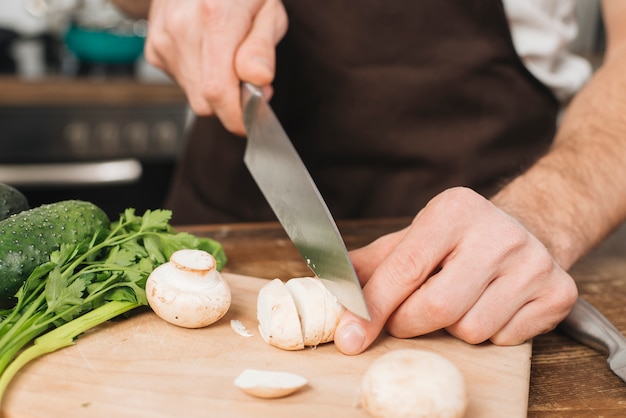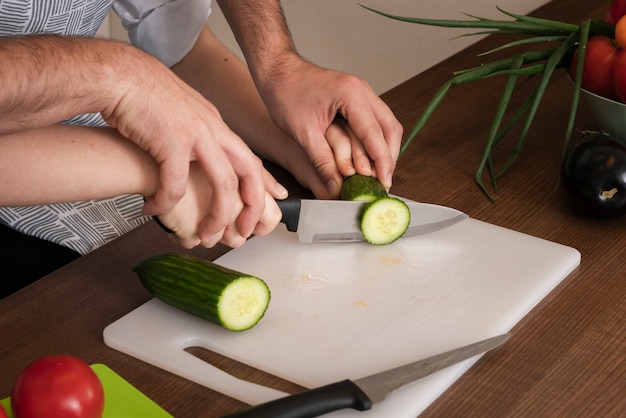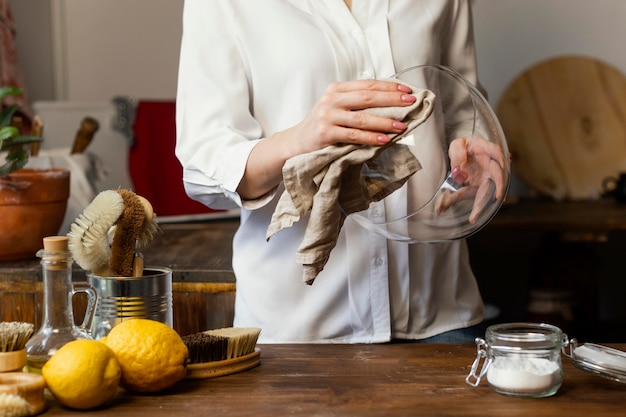Scallops, those delectable morsels of the sea, have always held a special place in my culinary heart. The delicate, sweet flavour and melt-in-your-mouth texture are simply irresistible. For years, I’ve been obsessed with finding the perfect way to cook them, experimenting with different techniques, sauces, and pairings. And let me tell you, the journey has been nothing short of delicious!
This guide is a culmination of all the knowledge and experience I've accumulated, a love letter to scallops, if you will. I’ll share everything from picking the perfect scallops to mastering the art of cooking them to perfection. Whether you’re a seasoned chef or just starting your culinary journey, I’m confident this guide will unlock the secrets to delicious scallop dishes, making you the envy of your dinner guests.
(Part 1) The Scallop Selection: Picking the Perfect Gems

The journey to a delightful scallop dish starts at the fishmonger’s. You’ll want to choose your scallops carefully, like picking a precious gem from a treasure trove. There are two main types of scallops, each with its unique charm:
Types of Scallops: The Dainty Bay and the Hearty Sea
- bay scallops: These tiny treasures are the epitome of delicate flavour and tender texture. They’re like the dainty little cousins of the larger sea scallops, perfect for a quick sear or pan-frying. They melt in your mouth, making them ideal for creating a sophisticated, light dish.
- Sea Scallops: These are the larger, meatier scallops, boasting a more robust flavour and firmer texture. They can hold their own against bolder flavours and cooking techniques, making them perfect for grilling, broiling, or even baking. Imagine them as the hearty siblings, delivering a satisfyingly substantial bite.
The Art of Choosing: What to Look For
Freshness is paramount! Think of it as the first impression – it sets the stage for the entire culinary experience. When choosing your scallops, follow these guidelines:
- Freshness: They should smell fresh, with a hint of saltiness, and absolutely no fishy odour. If you detect even a whiff of something off, it’s best to choose a different batch.
- Colour: Look for scallops that are a beautiful pale, creamy white colour. A slight blush of pink is normal, but avoid any with a yellow tinge, indicating they might be old.
- Size and Shape: For even cooking, aim for scallops of similar size. Too small, and they’ll cook up quickly, risking dryness. Too large, and they might take longer, leading to a chewy texture.
- Muscle: You’ll often find a round, white muscle attached to the scallop. It’s perfectly edible, but if you prefer a cleaner presentation, gently tug it off – it should come away easily.
(Part 2) Prepping for Perfection: A Foundation for Success

You’ve chosen your beautiful scallops, now it’s time to prepare them for their culinary transformation. This stage is crucial for achieving that perfect sear and mouthwatering flavour.
Patting Them Dry: Eliminating Unwanted Moisture
One of the biggest mistakes people make is not drying their scallops thoroughly. Excess moisture creates steam, leading to a soggy, bland dish. Don’t let this happen to your scallops! Grab a couple of paper towels and pat them dry, making sure to remove any remaining moisture. You want them dry, but not so dry that they start to flake apart.
Seasoning with Subtlety: Enhancing, Not Overpowering
Scallops have a delicate flavour, so you want to enhance, not overwhelm them with seasoning. A light sprinkle of salt and pepper will do the trick. I also like to add a squeeze of fresh lemon juice for a little extra brightness, bringing out the natural sweetness of the scallops.
Don't Overcrowd the Pan: Giving Each Scallop Its Space
This is essential for achieving that gorgeous golden-brown crust. If you overcrowd the pan, the scallops will steam instead of sear, resulting in a lackluster result. Give them enough space to lie flat, without touching, so they can cook evenly and develop that beautiful, crispy exterior.
(Part 3) Cooking the Scallops: Mastering the Art of Searing and More

Now comes the exciting part – the actual cooking! Here, I’ll guide you through the most popular methods, each offering a unique flavour profile and texture.
Pan-Searing: The Classic Approach to Perfection
Pan-searing is the classic way to cook scallops, resulting in a crispy exterior and a succulent, tender interior. It's a simple technique, but getting it right takes a bit of practice. Here’s how to do it:
- Heat the Pan: Start by heating a cast iron pan or a heavy-bottomed skillet over medium-high heat. You want the pan piping hot but not smoking. The hot pan will sear the scallops quickly, creating that beautiful crust.
- Add Oil: I prefer a neutral oil like grapeseed or canola oil for searing. You don’t need a lot – just a thin layer to coat the bottom of the pan.
- Sear the Scallops: Once the oil is shimmering, gently place the scallops in the pan, making sure they’re not touching. Sear them for about 2-3 minutes per side, depending on their size. You’ll know they’re ready when they’re nicely browned and have a slightly firm texture.
- Rest and Serve: Remove the scallops from the pan and let them rest for a few minutes before serving. This allows the juices to redistribute, resulting in a more tender and flavorful scallop.
Grilling: For a Smoky Flavour and a Bite of Summer
Grilling brings a delicious smoky flavour and those irresistible char marks to your scallops. It’s perfect for warm summer evenings, adding a touch of rustic charm to your meal.
- Pre-heat the Grill: Pre-heat your grill to medium-high heat.
- Grill the Scallops: Follow the same principles as pan-searing, cooking for about 2-3 minutes per side.
Broiling: A Quick and Easy Method for a Speedy Meal
Broiling is a great option for a quick and easy meal. It’s ideal for small batches of scallops, as it cooks them quickly and evenly.
- Pre-heat the Broiler: Pre-heat your broiler.
- Broil the Scallops: Place the scallops on a baking sheet lined with parchment paper. Broil them for about 2-3 minutes per side, until they’re cooked through and nicely browned.
Baking: For a Tender Texture and a More Gentle Approach
Baking is a gentle way to cook scallops, resulting in a more tender texture. It’s perfect for those who prefer a less intense flavour.
- Pre-heat the Oven: Pre-heat your oven to 375°F (190°C).
- Bake the Scallops: Place the scallops on a baking sheet lined with parchment paper. Bake them for about 10-12 minutes, until they’re cooked through and slightly golden brown.
(Part 4) Sauce and Accompaniments: Elevating the Scallop Experience
Now, let’s talk about the magic touch – the sauces and accompaniments that elevate your scallop dish from ordinary to extraordinary.
Sauce Options: A Symphony of Flavours
Sauces are the finishing touch, adding a burst of flavour and complexity to your scallops. Here are some of my favourite combinations:
- Lemon Butter Sauce: A timeless classic! Simply melt butter in a pan, add a squeeze of fresh lemon juice, and season with salt and pepper. It’s so simple yet so elegant, perfectly complementing the delicate sweetness of the scallops.
- Garlic Herb Sauce: For a fragrant, aromatic sauce, sauté some garlic and your favourite herbs in olive oil. Add a splash of white wine or broth to deglaze the pan, creating a rich, flavorful sauce.
- Creamy Mushroom Sauce: This is a decadent delight, perfect for a special occasion. Sauté some mushrooms with butter and garlic, then add cream and a splash of white wine. The creamy texture and earthy flavour of mushrooms are a beautiful match for the scallops.
- Spicy Chorizo Sauce: For a bolder, more adventurous flavour profile, sauté some chorizo with onion and garlic. Add a pinch of chili flakes and a splash of tomato sauce for a touch of spice and depth.
- Avocado Salsa: This is a refreshing and light option, ideal for summer. Combine diced avocado, red onion, cilantro, and lime juice for a vibrant, flavourful salsa.
Accompaniments: The Perfect Partners in Crime
Scallops are incredibly versatile, lending themselves to a range of accompaniments, each bringing a unique dimension to the dish.
- Risotto: The creamy texture of risotto is a perfect match for the delicate flavour of scallops. Try a classic mushroom risotto or a saffron risotto for a more luxurious touch.
- Pasta: Scallops are a welcome addition to various pasta dishes, such as linguine with white clam sauce or fettuccine alfredo.
- Polenta: Polenta is a hearty and comforting accompaniment that complements the richness of scallops. Its creamy texture and neutral flavour create a perfect balance.
- Roasted Vegetables: Roasted vegetables like asparagus, broccoli, and Brussels sprouts provide a healthy and delicious side dish, adding a vibrant burst of colour and contrasting textures.
- Green Salad: A simple green salad with a light vinaigrette is a refreshing contrast to the richness of scallops, making for a balanced and satisfying meal.
(Part 5) Serving the Scallops: A Culinary Presentation
Now comes the part where your culinary creation takes centre stage! It’s time to showcase your delicious scallops with flair.
Presentation: Creating a Visual Feast
Scallops are a beautiful ingredient, so don't be shy! Arrange them attractively on a plate with a drizzle of sauce, a sprinkle of herbs, and a touch of colour from your chosen accompaniments. Think about the textures and colours you want to showcase – you want to create a visual feast as well as a delicious one.
Table Setting: The Art of Creating Ambience
Set the table with your finest china and silverware, adding a few candles for a touch of romance. Creating a beautiful ambience sets the mood for a special meal.
Timing is Key: Enjoy at its Peak
The beauty of scallops is that they cook quickly, allowing you to savour them at their freshest and hottest. Serve them immediately after cooking, so the texture stays perfect, and the flavours are at their peak.
(Part 6) Storage and Leftovers: Maximizing Your Scallop Experience
Sometimes, we end up with a few leftover scallops. Don’t let them go to waste! Here’s how to make the most of them.
Storage Tips: Keeping Your Scallops Fresh
To keep your scallops as fresh as possible, store them in an airtight container in the refrigerator for up to 2 days. The key is to keep them sealed and prevent them from drying out.
Freezing: Preserving Their Goodness
If you plan to store them longer, freezing is a great option. Simply place them in a freezer-safe bag or container, making sure to remove any excess air. Freeze them for up to 3 months.
Reheating: A Gentle Approach to Revival
When you're ready to enjoy your leftover scallops, reheat them gently to avoid drying them out. You can pan-fry them in a little butter or oil, or bake them in the oven at 350°F (175°C) for about 10 minutes. They also make a delicious addition to stir-fries or pasta dishes.
(Part 7) cooking tips and Tricks: The Secrets to Scallop Success
Over the years, I’ve learned a few tricks of the trade that have helped me elevate my scallop dishes. These tips are like hidden gems, waiting to be discovered.
Don't Overcook Them: Maintaining Tenderness
The biggest mistake people make is overcooking scallops. They’ll become tough and rubbery. Remember, a little pink in the center is a sign of perfection! It means they’re cooked through but still tender and juicy.
Use a Thermometer: For Precision and Confidence
If you’re unsure about whether your scallops are cooked through, use a meat thermometer. The internal temperature should be 140°F (60°C) for medium-rare. This ensures they’re cooked safely and perfectly.
Experiment with Flavors: A culinary adventure
Don't be afraid to experiment with different flavours and seasonings! Scallops are incredibly versatile, embracing a wide range of flavour profiles. From citrus and herbs to spices and chili flakes, the possibilities are endless. Let your imagination run wild and create something unique and delicious!
Don't Be Afraid to Ask for Help: The Power of Community
If you’re feeling intimidated or have questions, don’t hesitate to ask your fishmonger or a chef for help. They’re a wealth of knowledge and are happy to share their expertise. The culinary world is a community, and we’re all here to help each other create delicious meals.
(Part 8) FAQ: Your Scallop Questions Answered
I've put together a list of frequently asked questions to help you confidently navigate the world of scallops.
1. Can I freeze scallops?
Absolutely! Freezing is a great way to preserve scallops for up to 3 months. Just make sure they're well-sealed in a freezer-safe bag or container, and you’ll be able to enjoy their goodness later on.
2. How do I know if scallops are bad?
fresh scallops should have a slightly salty, sweet smell, not a fishy one. They should also be firm and plump, not dry or shrunken. If you notice any strong fishy odour or a slimy texture, it's best to discard them.
3. How long do scallops take to cook?
The cooking time for scallops depends on their size and the cooking method you choose. Generally, they take about 2-3 minutes per side.
4. What happens if I overcook scallops?
Overcooked scallops will become tough and rubbery. Aim for a slightly pink centre for the most tender and flavorful result. Remember, the key is to cook them quickly and evenly, avoiding overcooking.
5. What are some good side dishes for scallops?
Scallops pair beautifully with a variety of side dishes, such as creamy risotto, flavorful pasta dishes, comforting polenta, vibrant roasted vegetables, or a refreshing green salad. It all depends on the flavour profile you’re aiming for and your personal preferences.
Everyone is watching

Perfect Rice Every Time: The Ultimate Guide to Cooking Rice
Cooking TipsAs a self-proclaimed foodie, I've always been a bit obsessed with rice. It's the foundation of countless cuisi...

Prime Rib Roast Cooking Time Chart: Per Pound Guide
Cooking TipsPrime rib roast. Just the name conjures images of lavish dinners, crackling fires, and hearty laughter. It’s ...

The Ultimate Guide to Cooking Asparagus: Tips, Techniques, and Recipes
Cooking TipsAsparagus. The mere mention of this spring delicacy conjures up images of vibrant green spears, crisp and burs...

Ultimate Guide to Cooking the Perfect Thanksgiving Turkey
Cooking TipsThanksgiving. Just the word conjures up images of overflowing tables laden with delicious food, the scent of r...

How Long to Bake Potatoes in the Oven (Perfect Every Time)
Cooking TipsBaked potatoes are a staple in my kitchen. They're incredibly versatile, delicious, and surprisingly easy to m...
